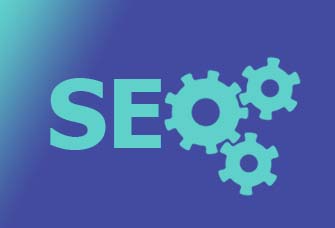Page load speed is one of the top priority for ecommerce owners. it should be. Improvements on this area must be high on your ecommerce website to-do lists. In fact, it should have been there at the onset of development. Not counting better user experience.
Is Improve page load speed a worthwhile priority?
Absolutely! Page load speed raises your shops potential for increased revenue as well as better organic search rankings. You may ask, how? The answer lies in what searchers does after clicking your link. Let us do some SEO math:
What is a Bounce rate?
To understand better, check this definition from one of the top seo guys in the industry. Google support itself.
A bounce is a single-page session on your site. In Analytics, a bounce is calculated specifically as a session that triggers only a single request to the Analytics server, such as when a user opens a single page on your site and then exits without triggering any other requests to the Analytics server during that session.
Bounce rate is single-page sessions divided by all sessions, or the percentage of all sessions on your site in which users viewed only a single page and triggered only a single request to the Analytics server.
Google loves websites that are faster because they can provide better experience for searchers, and also are more likely to drive revenue. Thus, Google asserts, you should make your site faster regardless of whether it helps your organic rankings directly or not.
What does it mean to say that your goal is faster page speed?
To help us understand this, Google came up with a revenue calculator, shown below. This app estimates the value of optimizing your site’s speed based on your analytics data. All you got to do is plug in your traffic, conversion rate, and average order value, and Google spits out a revenue projection.

So, in simple terms, faster page load speed equates to more revenue, according to google. And it makes sense for a couple of reasons: Better user experience which leads to happy customers, and better search engine ranking for the website.
So, a reduction of website page load speed from 4.2 seconds to 2.1 seconds with 1M monthly visitors and a 50$ average order will result to a million more $$$ in revenue. This is what it means to state a goal of a better page load speed.
The science of fast page load speed for ecommerce system.
Of all the website systems in the world, ecommerce systems and platforms are the ones that have to be up there in speed. But there are barriers to discussing page speed between marketing and development teams because of the lack of communication standard. It can not be overstate enough that both sides need to understand the metrics beyond “just make it faster.”
A couple of points regarding this communication standard need to be set: One is the “First page paint” and the other is the “Full Page paint”. Therefore, development teams should make it a point not to preload javascript files and third-party script files. Async-await can be use for this, or simply place the call at the footer after the initial page is loaded.
First page paint is the initial loading of your page without the javascript and third-party scripts. It is the time between navigation and when the browser render the first pixels of your website to the screen.
At normal development, without further SEO work, our ecommerce development process using thirtybees platform generates a 1.07s. The average accepted page load speed to be called a good website is 3.5sec. Within 3.5 seconds, your visitors should at least be able to see the website navigation. And see the fully loaded ecommerce website within 8.5 seconds.

You may notice that, even without further optimization, our ecommerce system is more than 2 seconds faster than a standard ecommerce website.
This is the page load speed performance of our ecommerce system after fully loaded without speed optimization.

Our deliverable is usually below 1 second of page load speed! Take for example this one ecommerce website developed in thirtybees system which is way below 1 sec with speed optimization.

Because we understand that website speed is crucial for every ecommerce website we develop!
We can never stress page speed enough. We are proud of our ecommerce system because we build each with speed and your revenue in mind!
Now a couple of things for the technically-minded. Google does offer two toolsets to help you out with page load speed.
PageSpeed Insights is the more user-friendly of the two. It shows a handy one-size-fits-all PageSpeed Score from 1 to 100 — which sadly does not correlate to whether you’re receiving the page speed rankings boost — alongside some detailed recommendations for how to improve.
Lighthouse crosses into developer mode with waterfall data for debugging. But it still offers the simple scoring and easier-to-understand recommendations of PageSpeed Insights.
In conclusion:
So, how fast is fast page load speed? A standard ecommerce page load speed should aim for a “First paint” of 3 seconds. This should give your users plenty of time to check out your website rather than spend them waiting for loading time. And at 8 seconds, your webpage should be fully loaded. However, to get past your competition, it is not enough just to be average and normal. Aim for the speed of 1 second, that would really give your website a boost in search engine ranking and increase your revenue as well.
Need help with developing a fast ecommerce website? Check us out using the contact form.
Don’t forget to tell us about what you think in the comment section. And if I may, please share this content to your social media friends. thanks and be blessed!







